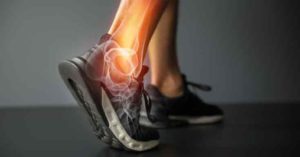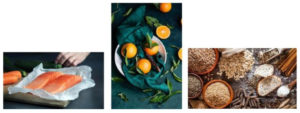
Why do your joints ache more in winter?
Yep, summer is over and you may be wrapping up in your winter woollies. You may also notice that your joints are beginning to stiffen up with the cold weather. This is a common problem; with many people reporting their condition worsen as the temperature drops. Research would suggest that it may not actually be the cold weather that causes joint pain to worsen; it could also be the change in the barometric pressure.
Barometric pressure, or the pressure of the air, can affect joints, but humidity, precipitation, and temperature are also at play. A rise in pressure usually means improving weather while falling pressure may reflect impending inclement weather. Barometric pressures will also vary with altitude and moisture. That makes it tricky for scientists to pinpoint exactly what it is about the weather that leads some people to report more pain when it’s cold, rainy, or humid.
How Weather May Affect Joints
There are a few theories about the relationship. One is that people with joint pain, especially arthritis, may be sensitive to changes in barometric pressure. When barometric pressure drops, there is less gravity to prevent swelling in joints that might already be inflamed. As the swelling increases, the nerves surrounding the joint will report increased amounts of pain.
Another idea: changes in barometric pressure may make your tendons, muscles, and any scar tissue expand and contract, and that can create pain in joints affected by arthritis. Low temperatures can also make the fluid inside joints thicker, so they feel stiffer.
You might also feel more pain when the weather keeps you from moving around as much as you typically do. People tend to stay indoors and lounge around more when it’s cold and rainy outside, and inactive joints can get stiff and painful.
Cold weather joint pain tends to be most common in weight-bearing joints—and the major joints that fall into this category the knees, hips and ankles, This is especially true for the running population, where they tend to be spending longer periods of time exercising outside in the cold. There’s a lack of research to prove why this happens, but experts have a few theories. The research suggests that in colder weather, the body will conserve heat, and it will send more of the blood to the organs in the center of the body, like the heart or the lungs. So when that happens, the arms, legs, shoulders, knee joints, those blood vessels will constrict. Less blood flow makes those areas colder and stiffer, which can cause discomfort and pain.
High humidity can also have a significant impact on the pain in your joints. This is said to be caused by dehydration in the body during a spell of high humidity. Simple strategies such as staying indoors, adjusting the air conditioning, and applying cooling products such as mint lotion can help to relieve painful joints during the summer months.
How to Ease Weather-Related Joint Pain
You don’t have to pick up and move to a different climate. There’s plenty you can do at home to relieve joint pain.
- When temperatures drop, try to keep yourself warm. Take warm showers or baths, dress in layers during the day (including gloves and warm socks), use an electric blanket at night, or crank up the heat inside your home.
- Keep a healthy weight and stay active. Try exercise that’s gentle on the joints, like yoga or swimming. That will help you build up muscle and bone If you go outside to exercise, limber up first with some gentle stretches.
- A proper warm-up and stretching will also help keep everything more limber—which is important to prevent stiffness from turning into an injury In general, for an activity like steady-state running, you want to at least warm up for 5 minutes (and possibly longer if you’re running outdoors) inside or outside.
- Don’t strain your joints if you don’t have to. Let someone else lift those heavy boxes.
- Make sure you take care of your health in general, like getting enough sleep and eating Healthy – Load up on foods rich in:
- Omega-3 fatty acids. Think salmon and nuts to curb inflammation.
- Vitamin K. Make meals that feature greens, such as spinach, kale, and cabbage, for their pain-soothing properties.
- Vitamin C. Add colour to your diet with juicy oranges,sweet red peppers and tomatoes, and other C-rich foods to halt cartilage loss (and resulting pain) that come with arthritis.
- Avoid foods high in omega-6 fatty acids, such as corn oil,which may trigger painful inflammation. Also swap refined grains for whole grains. Early research suggests refined grains have an inflammatory effect, whereas high- fibre whole grains may help reduce inflammation.

If you get into a good stretching and warm-up routine and still notice pain in your joints, talk to your health professional to obtain a diagnosis and management advice. It is important to remember that pain is your body’s warning system, and you need to listen to it. Having joint pain or stiffness year-round, not just when the temps are low, requires further investigation.
We are here to help!
Thanks to Jodi for researching this blog
Images:
- Sourced from: https://www.jointhealthmagazine.com/chronic-ankle-joint-pain.html
- Sourced from: https://www.health.qld.gov.au/news-alerts/news/why-you-should-eat-wholegrains-wholemeal-cereal-serves
- Sourced from: https://wexnermedical.osu.edu/blog/can-joints-predict-weather
Leave a reply

